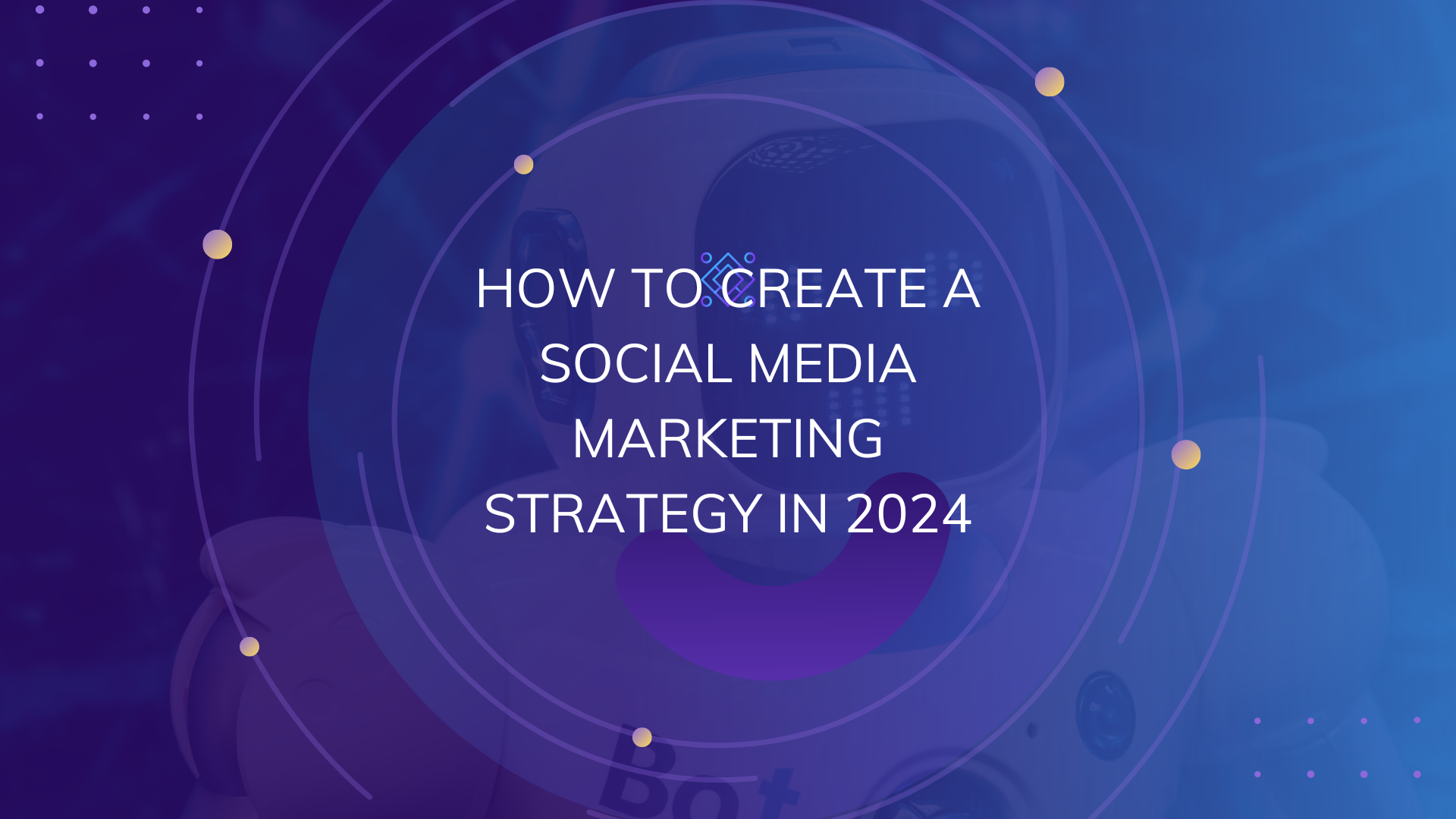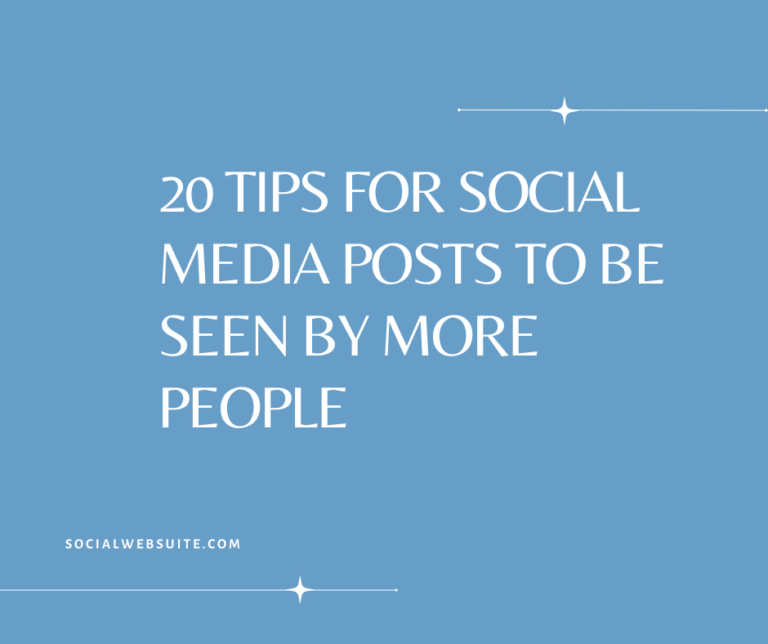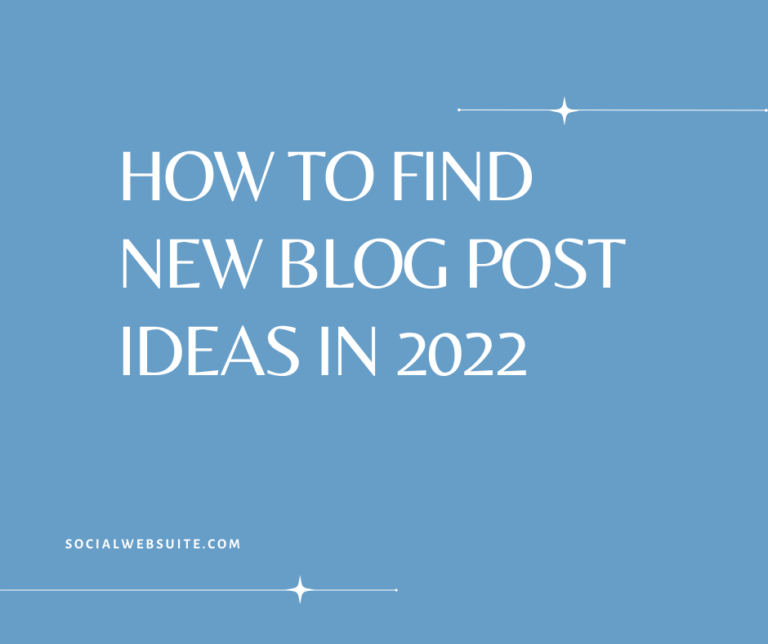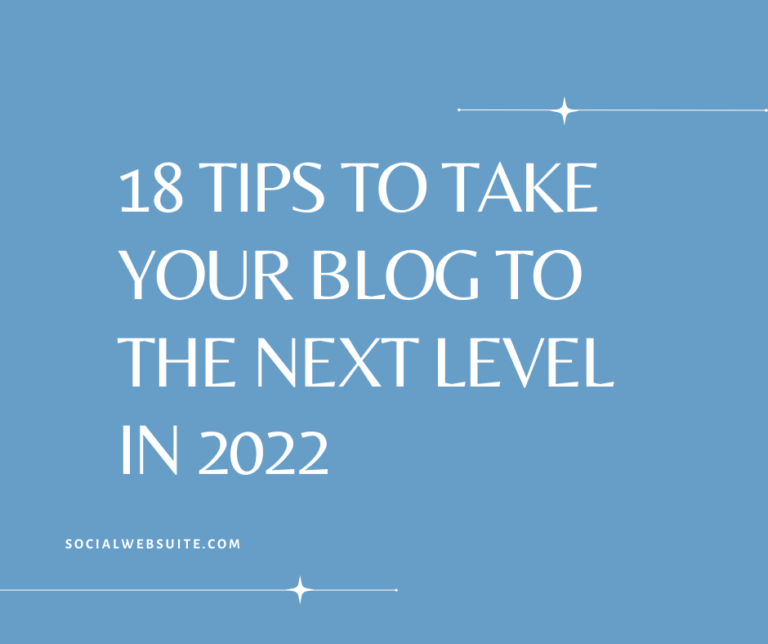
The article explains
- how to create a social media marketing strategy that drives business impact across reach, community building, and sales;
- it explores establishing S.M.A.R.T. goals connected to metrics,
- crafting detailed buyer personas through analytics and social listening,
- auditing current brand presence and performance to identify strengths and gaps,
- determining optimal platform mix based on audience behaviors,
- building thoughtful content calendars personalized to each channel,
- embracing social commerce opportunities via shoppable posts and influencer collaborations,
- focusing on participatory community-building efforts to spark organic advocacy,
- leveraging advanced analytics for deeper insights,
- and continually optimizing through regular strategy reviews, experimentation, and monitoring platform innovation to sustain relevance over time in pursuit of breakout success.
Introduction to the Creation of a Succesful Social Media Marketing Strategy
Social media has evolved from a novel way to connect with friends into an essential component of strategic marketing. Today, 58% of the global population engages on social platforms daily.
For brands, social media offers unparalleled opportunities to increase brand awareness, nurture leads, and build communities at scale. However, achieving breakout success requires carefully crafting goals and content while understanding target audiences intimately.
This definitive guide examines how to develop an audience-aligned social media strategy that fuels sustainable growth and drives impact.
We’ll cover crucial elements like:
- Setting measurable objectives tied to business outcomes
- Determining ideal social media platforms reaching your community
- Creating compelling content strategies tailored to consumer needs
- Building engagement through interactive campaigns
| Benefit | Description |
| Improved Brand Awareness | Expanding impressions and sharing of voice |
| Lasting Community Loyalty | Forming connections through engagement |
| Enhanced Sales Impact | Driving measurable conversions/revenue |
With practical frameworks refined for long-term resonance beyond chasing ephemeral trends, this blueprint consolidates the critical components empowering your brand’s social progress this year.
Let’s explore exactly how to develop a digital marketing strategy that amplifies existing marketing efforts through purposeful social innovation.
Set Measurable Social Media Marketing Goals Aligned to Business Objectives

All enduring social strategies originate from clearly defined objectives. Rather than vaguely “increasing engagement”, concrete goals create accountability tied to broader business priorities.
Let’s examine frameworks for developing sharply focused social media goals with crisp measurability.
Crafting S.M.A.R.T. Goals
The S.M.A.R.T. methodology ensures strategic goals translate into tangible outcomes rather than buzzword bingo.
S = Specific
Avoid generic statements like “become more engaging”. Instead, use precise language like “increase Instagram comments from women 18-35 in urban areas by 30%”.
M = Measurable
Incorporate quantifiable metrics allowing unambiguous tracking towards (or away) from your target.
A = Achievable
Set realistic milestones pushing your capabilities while respecting current baselines. Established brands fielding 100 daily comments expecting 1,000 within a month court disappointment.
R = Relevant
All goals should directly accelerate revenue, brand equity, or operational efficiency in some capacity.
T = Time-Bound
Every goal must have a defined deadline, whether 3 months or 3 years hence, galvanizing urgency.
Example S.M.A.R.T. Social Media Goals
- Increase community engagement score from 64 to 75 by Q3 2023
- Drive 500 monthly site click-throughs from LinkedIn by mid-year
S.M.A.R.T. methodology prevents squishy goals from falling prey to noble intentions without accountability.
Key Performance Indicators
Tangible metrics quantify progress delivering insight to optimize efforts for maximum impact.
Common social media key performance indicators include:
- Share of Voice: Presence in competitive conversations
- Sentiment: Perception analysis of brand mentions
- Engagement Rate: Community interaction levels
- Click-Through-Rate: Navigation from posts to sites
- Conversion Rate: Desired action completion percentage
Pro Tip: Calculate engagement rates for each social channel individually rather than cumulative brand-wide statistics masking channel differences.
Leadership Buy-In
Before investing sweat into executing a strategy, ensure key decision-makers agree with its direction through succinct communications conveying thoughtful planning and consideration of their priorities.
Present to leadership:
- Specific business challenges social media presence addresses
- Clarity on audience targeting and social posts
- Overview of social media channel roles and objectives
- Previous content marketing campaigns’ success indicators
- Predictive return expectations
Securing executive alignment early allows smoother future investment requests when acceleration opportunities emerge.
S.M.A.R.T. goal setting, key performance indicators, and leadership buy-in form the foundation empowering effective social media strategy actualization. Perfect these elements, and the rest naturally follows.
Understand Your Target Audiences So you Can Create a Social Media Strategy
Connecting with consumers requires comprehending motivations, challenges, and aspirations. Social media facilitates direct conversations once you grasp individuals behind screens through “personas” – composite profiles of key audience groups.
Let’s explore tactical persona development and social listening unlocking consumer understanding and guiding content resonance.
Creating Detailed Buyer Personas
Buyer personas consolidate demographic, geographic, behavioral, and personality attributes into a singular hypothetical archetype embodying a distinct market segment.
Components include:
Demographic Data
- Age
- Household Income
- Education Level
- Occupation
- Location
Psychographics
- Values
- Interests
- Shopping Preferences
Content Behaviors
- Platform Preferences
- Engagement Drivers
- Favorite Creators
Motivations and Challenges
- Priority Improvement Areas
- Shopping Pain Points
- Aspirational Endeavors
For example:
Name: Ashley
Age: 28
Job: Marketing Manager
Location: Chicago
Values: Career-Focused, Earth Conscious
Platforms: Instagram, LinkedIn
Pain Points: Manual Reporting, Feeling Burnt Out
You may develop groups like career-focused mothers, AI enthusiasts, or adventure travelers based on distinct attributes.
Pro Tip: Limit personas to 4-5 avoiding hyper-specific outliers irrelevant to mass targeting.
Social Listening
Analytics deduce quantitative patterns. Social listening adds qualitative context through unfiltered public conversations across networks.
You may uncover underserved female business travelers craving airport lounge content or new fathers trading toddler tips. Feeding these niches earns relevance and word-of-mouth marketing as thanks.
Optimizing Content Strategy
Armed with rich qualitative and quantitative intelligence, you now possess the power to adapt content, tone, and formats optimized for resonance.
- Baby Boomers respond better to educational posts than provocative questions
- A case study is better than standalone promotion posts
Such leverage transforms average content into breakout stars thanks to a keen understanding of consumer perspectives, priorities, and preferences.
Let your audience’s voice guide your content innovation and their response accelerate your strategy.
Audit Where Your Brand on Social Media Currently Stands

Current social media efforts establish your jumping point. Auditing existing presence objectively assesses strengths, weaknesses, and gaps informing strategy enhancements.
Let’s review frameworks evaluating your brand’s present social media maturation.
Profile Optimization
Audit social media profiles for:
- Complete contact info and links
- Profile images are properly sized and formatted
- Descriptions communicating core values clearly
- Keywords are naturally integrated helping the discovery
Unoptimized profiles undermine content efforts by missing opportunities to attract ideal newcomers.
Pro Tip: Ensure branding and messaging align across networks maintaining consistency.
Historical Performance
Analyze past content across dimensions like:
- Engagement rates over time by persona
- Click-through rates by channel
- Top formats resonating with the audience
- Competitor benchmarking by vertical
Historical patterns spotlight creative fatigue candidates ripe for innovation while revealing standout legacy performers still delivering results.
Avoid recency bias skewing decisions – account for seasonality and outliers.
Account Consolidation
The social landscape moves relentlessly. Abandoned legacy accounts clutter brand clarity while new entrants demand evaluation.
Triage accounts by asking:
- Does the audience still spend meaningful time here?
- How does our presence here align with core objectives?
- Are competitors gaining an advantage we should address?
Always balance consolidation risks before leaving communities counting on your presence against maintaining unsustainable fragments.
Competitor Benchmarking
Regular check-ins assessing rival activity uncover blindspots:
- New platform traction worth testing
- Creative content formats to borrow
- Overlooked audience microsegments
- Tactical innovations like social commerce
You compete for more than customers – your mission competes for attention. Steal smartly to earn both.
Analyzing past performance, streamlining accounts, and learning from peers crystallizes strengths, unmet needs, and growth potential your strategy aims to fulfill.
Determine Your Platform Mix so You Can Optimize Your Social Strategy for Your Business

Prioritizing channels aligned to audience behaviors and campaign objectives conserves resources delivering better results.
Let’s examine how to evaluate platform selection through laddering to business goals.
Network Evaluation Criteria
Vet inclusion asking:
– Audience Relevance: Do our targets actively spend time here?
– Content Flexibility: Can we create engaging content matching audience expectations?
– Conversion Tracking: Are analytics available to quantify business impact?
– Competitor Traction: Do rivals exhibit meaningful traction or does white space exist?
– Team Skills: Do we currently possess expertise in producing excellent content?
– Risk Factors: Are there compliance, security, or PR considerations?
– Opportunity Costs: Does projected ROI justify required investments?
Developing Channel-Specific Strategies
Blanket content blasted across every network risks irrelevance next to tailored messaging resonating through personality mirroring.
Shape distinct positioning by:
- Analyzing historical top content uncovering proven formulas
- Crafting channel-specific value propositions and messaging
- Designing signature content formats aligning to consumption patterns
- Maintaining voice consistency while optimizing tonal nuances
Such shaping guides audience expectations while allowing flexibility in playing to individual platforms’ strengths.
Enhancing Social Profiles
First impressions matter. Ensure new visitors instantly recognize your brand through profile optimization.
Essential profile elements:
- Polished images properly sized
- Clear descriptions communicating differentiation
- Prominent contact info and links to convert curiosity
- Strong CTAs matching channel behavior sparking engagement
Profiles welcome visitors instilling confidence and encouraging relationship initiation. Make welcomes memorable.
Carefully choreographing platform selection, strategic positioning, and profile enhancement manifests audiences primed for activation.
Map Your Successful Social Media Content Strategy
Content drives connections. An editorial strategy aligning creative themes, formats, and calendars to audience needs and platform behaviors ensures consistent innovation keeping engagement thriving.
Let’s examine how to craft an always-on content engine fueling growth.
Building a Social Media Content Calendar
The world’s best content lacks impact without systematic distribution. Calendars outline proactive ideation balancing variety and consistency.
Calendars cover:
- Content themes and topics
- A mix of formats across text, images, video, audio
- Network and persona-specific considerations
- Major events, holidays, or cultural moments
- Lead times for approvals needing extra cycles
- Collaborations with teams like Sales, HR or Procurement
Proactively plotting quarterly editorial calendars powers productivity and alignment freeing resources reacting to daily creative block.
Testing Social Content Personalization
Balance tailoring content to audience preferences with production practicalities avoiding fragmented niche creation costs.
Personalize intelligently through:
- Channel-specific messaging matching community norms
- Creative nuances reflecting platform cultures
- Geographic localization highlighting region-specific value
- Events, holidays, and trends specific to subgroups
- Experiments comparing generic to tailored performance
Analyzing Performance Rigorously
Judging content solely by vanity metrics risks losing relevance catering creatively to a narrow echo chamber.
Assess impact across dimensions like:
- Traffic referred and conversions driven
- Sentiment polarity scoring
- Virality through comment/share rates
- Brand lift polling tied to each campaign
Quantifying business impact ensures continual alignment to strategic goals beyond chasing engagement for ego.
Carefully orchestrating content as the heartbeat of experiences earns enduring affinity and community leadership.
Leverage Emerging Social Commerce Opportunities
Social platforms increasingly integrate frictionless shopping journeys making impulsive discovery a revenue center. Creative brands cultivate commerce through clever content and influencer partnerships.
Let’s see how to sell socially while strengthening community connections.
Embracing In-App Social Stores
Facebook, Instagram, Pinterest, and TikTok embed intuitive checkout flows and personalized recommendations converting inspiration into transactions.
Best practices include:
- Tagging shoppable products within organic content
- Creating shoppable video and live-stream events
- Sharing curated collections and gift guides
- Automating personalized cross-sells after purchases
Lower buying barriers through information-rich discovery shopping well-suited for considered purchases.
Stimulating Scarcity Marketing
The explosion of real-time video sparked livestream commerce also allowing instant-access events and building demand through limited availability flashes.
Strategically unveil:
- Pre-launch product glimpses revealed exclusively to loyal followers
- Countdown timer-limited unit batches disclosed mid-livestream
- Pop-up location/date announcements inviting in-the-know enthusiasts
Strategic unveils make coveted access exclusive evoking viral sharing and impulse enthusiasm converting interest into sales.
Partnering With Aligned Influencers
68% of consumers made purchases based on influencer recommendations last year. Yet 92% value sincerity over hard-sells.
Maximize creative collaborations through:
- Co-creating engaging video content aligned with mutual goals
- Providing early-access product samples for authentic reviews
- Promoting their partnership discounts to joint audiences
True connections outperform transactional agreements. Focus on shared values cementing lasting and mutually beneficial relationships.
Thriving social commerce blends informational and shoppable content optimizing integrated paths between discovery and purchase while strengthening bonds.
Focus on Community Building as Your Social Media Marketing Plan
Beyond chasing passive eyeballs, social media facilitates direct conversations between brands and the people behind screens. Two-way exchanges cement emotional connections paying long-term dividends.
Let’s see how to transcend transactions through relationship focus.
Fostering Participation
Compelling questions, inclusive polls, and friendly contests involve audiences as contributors rather than just spectators.
Consider asking:
- Seeking live video guests to co-host an upcoming industry panel?
- Have recipe recommendations for us curating seasonal recipe eBooks?
- What features would you love to see in our next product update?
Build communities, not just distribute content. Make development participatory and inclusive at every opportunity.
Encouraging Advocacy
Empowered audiences authentically promote beloved brands more effectively than direct sponsorship allowing creative community co-creation.
Amplify affinity through:
- UGC and review re-sharing spotlighting authentic stories
- Hashflags and video templates inviting personalized creativity
- Embeddable widgets, carousels, or badges boost discovery
Give fans highways channeling organic advocacy directly fueling credibility and exponential exposure compounding.
Responding Radically
Average response times define support success for most. Yet memorable connection moments often follow negative occurrences through conflict transformation.
Turn detractors into devotees by:
- Responding instantly with understanding over defensiveness
- Meeting underlying motivations through candid dialogue
- Delivering wow-worthy recovery gestures from the heart
Surprisingly positive conflict resolution creates deep loyalty through vulnerability, accountability, and compassion revealing true character.
Focus first on growing people through service. The numbers will follow in due time.
Use Advanced Analytics for Deeper Insights Into Your Social Presence
Basic metrics guide directional progress but miss strategic nuances without integrating advanced analytics quantifying qualitative perceptions plus predictive signals charting optimum pathways.
Let’s overview next-generation social data mining elevating decisions.
Layering Sentiment Analysis
Pure volume metrics miss emotional essence. Sentiment analysis classifies commentary sentiment as:
- Positive
- Negative
- Neutral
For example, 50 comments could mean:
- 5 positive, 45 negative (Overall negative perception)
- 40 positive, 10 negative (Overall positive perception)
Such discernment prioritizes addressing risk areas proactively.
Parsing Language with AI
Natural language processing (NLP) extracts meaning from unstructured conversations detecting themes and patterns.
NLP feeds augmented intelligence dashboards judging content performance across concepts like:
- Innovation Interest – Curiosity in capabilities
- Satisfaction Scores – Happiness with experiences
- Loyalty Drivers – Factors cementing affinity
Automatically quantifying language provides rapid insight informing creative and positioning.
Simulating Future Pathways
Predictive analytics forecasts scenarios analyzing past signals projected forward factoring in leading indicators.
Ask and answer “what if” questions like:
- How would targeting parents in Q4 with seasonal campaigns change revenue projections in key regions?
- Would focusing video format prioritization on Instagram over LinkedIn improve engagement in 2024?
Stress testing strategy through simulation provides confidence in pursuing high-probability pathways while mitigating risks proactively.
Innovative analytics supplement conventional wisdom drawing latent drivers to the surface and empowering smarter innovation rooted in audience truth.
Create a Social Media Marketing Strategy – Continual Optimization Beats Perfection
Social media resembles aviation more than architecture. Success depends on agility augmenting strategy through relentless refinement rather than rigidly executing fixed master plans.
Let’s examine best practices for adapting a competitive advantage.
Scheduling Regular Reviews
Quarterly or bi-annual social media reviews feel prudent for most brands before annual plans ossify through assumption inertia.
Optimizing brands re-evaluate strategy monthly by asking hard questions:
- Are our personas still accurate? How have priorities shifted?
- Does our content balance match audience consumption patterns?
- Are new competitors gaining traction in our niche?
- What Terms of Service changes require attention?
- Have breakthrough innovations emerged worth testing?
Regular reexamination provides course-correcting feedback loops anticipating change.
Maintaining an Experimental Mindset
Testing stimulates progress. The most effective brands perpetually trial new formats, partnerships, and channels challenging legacy views through fresh data.
Areas to test include:
- New content formats against baselines
- Creator collaborations against DIY content
- Emerging networks against existing stable
- Localization adaptations against global messaging
Treat investment costs as tuition for an education in your audience rather than gambling just to win.
Leveraging Leadership Touchpoints
Apprising executives through monthly reviews positions social teams more strategically conveying customer proximity and platform expertise while surfacing opportunities for integration.
Prepare insights across dimensions like:
- Trends requiring R&D alignment
- Pain points sales should address
- Recruiting partnerships with HR
- Compliance considerations
Proactive touchpoints seed future budget potential when acceleration moments arrive.
Sophisticated social media strategy crystallizes through courageous iteration, not initial planning polish. Sprint faster by questioning everything except your audience’s ultimate authority.
Let’s explore common questions about building winning social media marketing strategies:
Why is having a documented social media strategy for your business important?
With consumers spending 2+ hours daily across social platforms, brands must strategically cultivate connections at scale rather than manually reacting to trending hashtags and superficial virality.
Thoughtful strategies create alignment and efficiency through:
- Goal setting: Creates accountability tied directly to business metrics
- Workflows: Streamlines efficiencies coordinating teams
- Guardrails: Maintains brand voice/tone consistency across channels
- Reporting: Quantifies impact justifying resources and expansion
Strategic plans provide direction setting teams up for self-sufficient innovation excellerating results over manual micromanagement.
How do you set measurable goals and social media metrics?
The S.M.A.R.T. goal-setting methodology creates sharply focused objectives with crisp measurability and deadlines holding teams accountable.
S = Specific
Use precise language quantifying target outcomes like “increase Instagram video views from women 18-35 by 20% by Q3”.
M = Measurable
Incorporate unambiguous metrics allowing clear tracking towards goals. Vanity counts lack strategic context.
R = Relevant
All goals must create enterprise value from revenue to branding or retention.
T = Time-Bound
Deadlines instill urgency so teams prioritize appropriately balancing capacity.
S.M.A.R.T. goals then connect to key performance indicators like click-through rates and engagement levels for frequent progress tracking.
What methods help you best understand your target audiences?
Personas consolidate demographic, psychographic, and behavioral attributes into representative profiles embodying key segments like young suburban mothers or retired golf enthusiasts. A vivid understanding of beliefs, challenges, and aspirations guides resonance.
Social Listening analyzes unfiltered conversations detecting shifts in opinions, discussions, and trends emerging across networks. Such outside-in intelligence peppers creative strategy with relevance.
Combine analytical deductions with social listening for decision-grade audience intimacy in 2024.
Social Media Audit – How should you evaluate where your brand currently stands on social media?
Auditing social presence through unbiased assessments of historical performance, competitive positioning, and risk areas crystallizes strengths, gaps, and growth potential focusing strategic efforts on highest-return priorities.
Key audit dimensions include:
- Past content resonance variation by the audience
- Social commerce capability evaluation
- Compliance and security protocol analysis -Account consolidation streamlining
Analyze past performance plus current risks and opportunities maximizing future probability of breakout success.
What criteria should you use to determine which platforms are best for your brand?
Choosing social media platforms balances audience behaviors, content capabilities, and competitive factors:
- Audience relevance: Do our targets actively spend meaningful time here?
- Content flexibility: Can we create content matched to consumption styles and expectations?
- Conversion tracking: Can we quantify business impact through site traffic or sales?
- Competitor traction: Does white space exist allowing differentiation?
Right platforms conserve resources focusing efforts on communities displaying the greatest engagement potential.
What should a successful social media marketing strategy include?
Strategic content engages target groups consistently through value sharing versus intermittent promotion. Core elements involve:
- Editorial calendars plotting creative themes, partnerships, and formats
- Performance analysis judging engagement plus business metrics
- Experimentation testing new styles against existing baselines
Content drives community relationships. Map activations nurturing enduring affinity through perpetual optimization.
Why is focusing on community building important on social platforms?
Social networks facilitate intimate dialogues between brands and the people behind screens. Prioritizing engagement through polls, inclusive contests and UGC spotlighting authentic stories cements emotional connections paying long-term dividends through recommendations and resilience.
68% of consumers made purchases based on influencer recommendations last year. Community advocacy amplifies exponentially.
Let relationships lead revenue through a commitment to understanding over transactional exploitation.
How often should you refine your social media strategy based on performance?
Adaptation accelerates growth. Savvy brands redefine strategy through quarterly reviews examining the latest audience signals and platform innovations maintaining alignment.
Ongoing experimentation through weekly testing of content variants plus awareness of competitive breakthroughs future-proofs relevance as preferences fluidly shift.
Choose innovation through iterative optimization over rigid plan ossification. Progress flows through courage questioning legacy assumptions.





